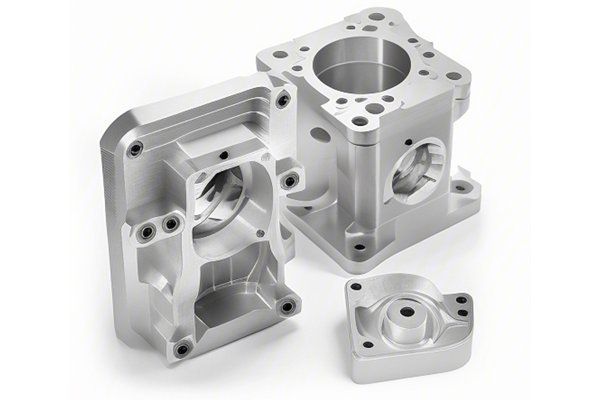*
Did you know that the global CNC machining market size was valued at approximately $68.4 billion in 2022, with expectations to grow significantly in the coming years? As industries worldwide increasingly lean on precision components for everything from consumer electronics to aerospace, the question of delivery and logistics has never been more crucial.
In today’s interconnected world, businesses are not restricted by geographical boundaries. This fact raises a vital question: does CNC machining provide global delivery services for precision manufacturing needs? The short answer is yes, but there’s much more to dissect and understand. This article will explore the intricacies of global CNC machining delivery services, the factors that affect them, and the challenges businesses face.
—
CNC, or Computer Numerical Control machining, is a manufacturing process that uses computerized controls to operate machine tools. This technology is pivotal for precision manufacturing, allowing for intricate designs and efficient production.
1.1 How CNC Machining Works
At its core, CNC machining involves the following steps:
—
The modern economy thrives on global trade. As businesses expand their operations internationally, they require the same quality widget manufactured no matter where in the world it is being used.
2.1 Advantages of Global Delivery Services
2.2 Demand for Accurate and Timely Delivery
Timely delivery is crucial in sectors where just-in-time inventory practices are standard. Delays in receiving components can halt entire production lines, leading to increased costs and customer dissatisfaction.
—
As beneficial as global delivery services are, several factors can complicate logistics and fulfillment.
3.1 Regulatory Compliance
International trade operates under various import and export regulations. Companies must navigate customs, tariffs, and quality certifications. Engaging with a skilled manufacturer well-versed in these regulations is essential.
3.2 Lead Times
CNC machining components might have long lead times based on material availability, design complexity, and production schedules. Businesses must proactively manage expectations and communicate effectively with partners.
3.3 Shipping and Logistics
Various shipping methods—air, sea, or land—each come with their nuances in terms of cost, time, and reliability. Having a clear logistics plan that considers international shipping intricacies is essential for success.
—
Understanding the challenges involved in global delivery is only half the equation. Let’s explore solutions that improve the effectiveness of delivery in CNC machining.
4.1 Strategic Partnerships
Establishing strong relationships with suppliers, shipping companies, and local customs officials can greatly expedite the delivery process. Understand their capabilities, limitations, and timelines to form a well-rounded logistics strategy.

4.2 Utilizing Technology
Modern technologies, such as AI and IoT, enable businesses to track shipments in real-time, predict delays, and optimize shipping routes. Implementing robust enterprise resource planning (ERP) systems can facilitate coordination between manufacturing and logistics.
4.3 Thorough Planning
Conduct a detailed analysis of market demand and build a supply chain strategy that anticipates challenges. Creating buffer inventories or opting for alternative shipping methods can protect against unforeseen delays.
4.4 Compliance and Documentation
Make sure that all necessary documentation for shipping and customs clearance is prepared in advance. Develop a compliance checklist to aid in streamlining this process, ensuring that all parts meet international quality and safety standards.
—
While global delivery is essential, partnering with local CNC machining providers can also be a viable option for specific needs.
5.1 Benefits of Local Providers
5.2 Hybrid Models
Many businesses opt for a hybrid approach, utilizing both global and local CNC machining services. This allows for scalability in production while ensuring quick local support when necessary.
—
To fully appreciate CNC machining and global delivery services, consider several real-world examples where firms successfully achieved their manufacturing goals.
6.1 Tech Startup Scaling through Global CNC Machining
A tech startup specializing in consumer electronics found itself in a pressing situation when demand surged for its products. By partnering with a global CNC machining provider, it maintained production timelines, fulfilling international orders while keeping costs down. Strategic management of lead times allowed the startup to navigate through supply chain disruptions seamlessly.
6.2 Local Manufacturer Leveraging Global Partners
A local manufacturer producing medical equipment faced challenges in sourcing materials due to logistical hurdles. By aligning with global CNC machining providers for specialized components, they managed to enhance their offerings while simultaneously cutting costs. This partnership opened doors to new markets, drastically improving their business sustainability.
—
As we move forward, emerging trends will shape CNC machining and its global delivery frameworks.
7.1 Customization and On-demand Manufacturing
The rise of on-demand manufacturing allows consumers to specify custom orders without the large upfront costs of maintaining inventory, making CNC machining even more appealing for global suppliers.
7.2 Sustainability in Production
With growing concerns over climate change, CNC machining providers increasingly adopt sustainable practices, minimizing waste, and reducing carbon footprints. Eco-friendly delivery methods are becoming more popular, appealing to conscientious companies.
7.3 Blockchain in Logistics
The logistics industry is seeing the integration of blockchain technology, enhancing transparency and security in the supply chain. This could revolutionize how CNC machining businesses track shipments and manage global logistics.
—
Navigating the realm of global CNC machining delivery services is indeed multifaceted, requiring a deep understanding of logistics, compliance, and strategic partnerships. With the growth of worldwide trade, the demand for precision components continues to rise, making it imperative for companies to explore how they can optimize their global delivery strategies.
In summary, the ability to effectively manage global delivery services in CNC machining can unlock tremendous opportunities for businesses while reducing lead times and costs. As your manufacturing strategy evolves, consider the insights shared in this article.
Understanding global delivery services in CNC machining is not just about logistics; it’s about fostering a distribution network that can ensure your business thrives in the international market. Thus, as you reconsider your CNC machining providers, the question remains: are you ready to leverage global delivery services to meet your precise manufacturing needs?






